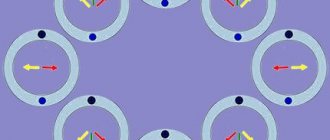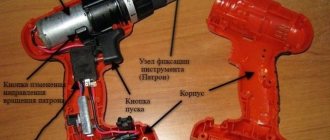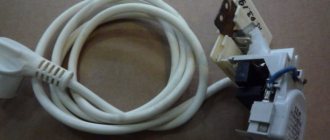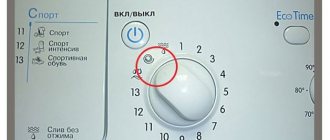Even in megacities, not to mention small villages, there are houses that are not connected to a gas main. However, in the modern world there is no building that is not supplied with power. In such a situation, only an electric stove can replace its gas counterpart. But, like any technology, it can break. We will talk about the main causes of breakdowns and ways to eliminate them below.
To repair an electric stove, you need to understand the principle of its configuration and know how it works. Main components:
- hob (power regulators);
- oven (if available - with grill);
- lower protective layer.
All electric stoves have the same operating principle: current flows to the heating element, heating it to the set temperature. The heating elements give off their heat to the dishes and everything around them (only an induction oven does not distribute heat around). Therefore, the most vulnerable part of this item is the electric stove burner. It is in it that the heating parts are located, which cause possible breakdowns.
Replacing the burner is done in two ways - calling a specialist or doing it yourself. The second option is preferable due to its low cost. The main thing is to correctly determine the cause of the malfunction.
Causes of burner breakdowns
Electric stoves fail for a number of reasons:
- overheating of the heating element;
- temperature changes;
- mechanical damage.
Most often, a breakdown becomes noticeable when the electric stove does not heat well. Internal faults go unnoticed until visual “symptoms” appear. The primary reason to diagnose the installation is a non-working or weakly heating electric stove burner, which can be checked with a multimeter.
Types of faults
Burners for electric stoves come in different types, depending on the type of surface. For example, ceramic and glass-ceramic are characterized by strength and impact resistance. Here the burners are located under the panel, which allows not only to quickly replace them, but also to use different types of electrical media in one installation.
In enameled household appliances, a cast iron burner is installed, which can retain heat for a long time after being disconnected from the power supply. They are more durable in use and are widely used in everyday use.
Spiral and pancake burners are larger in size compared to their “brothers”, so they are gradually going out of use. They are unsafe and bulky, so they are inferior to modern halogen devices.
But no matter how expensive and unique the device is, no one is immune from breakdowns. Let's look at the most common problems typical for electric stoves.
Burnt burner spiral
The most likely breakdown for owners of electric stoves is that one or all of the burners stop working. The reason is a burnt-out spiral or nichrome thread. The solution to the problem is to replace the burnt out part.
The part may not immediately stop functioning. Gradually, the owner may notice that the surface does not heat up as much as before - this is the first signal of the need to diagnose the device.
Don’t wait until the stove stops working altogether—it’s much cheaper to replace a burner than several or purchase new appliances. In new devices, just one failed part can block the operation of the others.
The burner spiral is cracked
The problem may lie in one part when the electric burner is out of order. The reason is a violation of the integrity of the heating element. The inner circle of the electric stove may stop heating due to a crack in the spiral.
Home repairs can not only result in the breakdown of the entire household device, but also pose a danger due to a possible fire or short circuit in the electrical wiring. You must immediately replace the heating element or call a technician.
Thermal protection triggered
If your device “turns itself off”, the thermal protection function has triggered. For example, the Lysva electric stove can automatically turn off due to overheating. The system breaks the power supply circuit and the device no longer heats.
If this happens, it is necessary to analyze the probable causes of overheating:
- sensor failure;
- breakdown of the temperature regulator;
- malfunctions in the cooling system - fan.
If you are not an experienced specialist, it will be difficult to determine the real cause of the breakdown. One or all burners will turn off spontaneously until the real cause of overheating is eliminated.
Wrong utensils
For proper operation of electrical installations, experts recommend using the correct utensils. For example, induction cookers do not “recognize” every kitchen item, which is why the regulator may simply not work and the area will not heat up.
Another option is a pot or frying pan that is too heavy for a small heating area. Changing the factory settings is not so easy (and not possible in all models), so when buying an electric stove, pay attention to the recommendations in the instructions regarding cookware for it.
The power switch is faulty
If all the parts of the equipment are working properly, but one platform is “a little acting up” – don’t turn a blind eye to it! The cause of the breakdown is a failed power switch. There is a high probability that over a long period of operation the springs have weakened or the contacts have burnt. To check for sure whether a part is broken, you need to ring with a multimeter to determine the range of basic measurements and calculate faults.
To be completely sure that the cause of the breakdown is a faulty switch, try connecting another burner to it. If this is not the reason, the plane will heat up as expected, and the temperature will be regulated by the switch. Otherwise, any of them will not work correctly while regulated by a faulty element.
Sensor faulty
A broken sensor has the same “symptoms” as the power switch - the burner does not heat or the appliance does not work at all. The difficulty is that the diameter of the damage in sensor models is wider, and it is difficult to determine the damage on your own. Such electric stoves operate on the basis of special electrical circuits that cannot be checked with a simple multimeter. To diagnose this kind of malfunction, it is necessary to use special equipment and at least understand the electrical circuits of a particular stove.
Thermostat malfunction
If the heating surface suddenly stops turning on or turns off on its own after a short period of operation, the thermostat has broken down. A variation of this malfunction is a partially inoperative sensor. In this case, the size of the problem reaches large proportions, leading to disastrous consequences. To avoid having to go buy a new electric stove, if you discover a malfunction in the operation of the thermostat, you should immediately contact a specialist.
Control module failure
Due to modern technology, many stoves are controlled by a programmed system, which can cause failures. If the control module does not operate correctly, various breakdowns occur:
- the stove stops heating;
- spontaneous turning on and off of the burner (or the entire stove);
- premature shutdown.
Such malfunctions are the most dangerous, since they are caused not by human activity, but by internal failures of equipment.
ECH-burner. Electrical diagram. Troubleshooting. Possibilities of inclusion. :
Great article! I learned a lot of useful things! And in general, potomstvennyjmaster.100ms.ru is a very good site! Thank you and good mood to everyone! picture for the mood
Svetlana, hello. Thank you so much for your comment and the kind words in it. This is very motivating to continue! It’s difficult to write professional topics in simple language, but I’ll try










